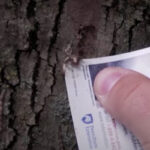The Venus flytrap ( Dionaea muscipula ) is undeniably one of the most fascinating plants in the world, captivating plant enthusiasts and scientists alike. Even Charles Darwin was enchanted, describing it as “one of the most wonderful plants in the world.” Native to the longleaf pine habitats of North and South Carolina’s Coastal Plain and Sandhills, this carnivorous plant has garnered significant attention, not just for its unique trapping mechanism but also for its conservation status. While recent assessments in 2023 by the U.S. Fish and Wildlife Service concluded that it doesn’t currently warrant listing under the Endangered Species Act, understanding the threats it faces is crucial, especially when considering purchasing one.
Understanding the Venus Flytrap and Its Habitat
Venus flytraps thrive in very specific conditions, naturally occurring only in the southeastern United States. Their native habitat is characterized by nutrient-poor, acidic soils, and open, sunny areas within longleaf pine savannas. These environments are historically maintained by frequent fires, which prevent taller vegetation from overshadowing the low-growing Venus flytraps and competing for resources. This delicate ecosystem is crucial for their survival in the wild.
Threats to Wild Venus Flytraps
Despite their captivating nature and popularity in cultivation, Venus flytraps face significant threats in their natural habitat. The primary danger is habitat loss due to various factors:
- Fire Suppression: The suppression of natural fires, essential for maintaining their open habitat, leads to encroachment by shrubs and trees, degrading the quality of Venus flytrap environments.
- Conversion to Agriculture and Silviculture: Land conversion for agriculture and pine plantations often involves clear-cutting and soil bedding, directly destroying Venus flytrap habitats.
- Development: Urban and infrastructure development leads to habitat destruction through construction, drainage of wetlands, and alteration of natural landscapes.
- Road Maintenance and Expansion: Venus flytraps found near roadsides are vulnerable to road maintenance activities, vegetation management, and road widening projects.
- Poaching: Unfortunately, the allure of Venus flytraps has also made them targets for illegal collection from the wild. Poaching for the horticultural trade and even for purported pharmaceutical uses has significantly impacted wild populations. In North Carolina, poaching Venus flytraps is now a felony, highlighting the severity of this issue.
Image alt text: Venus flytrap plants growing amongst grasses and low vegetation in their native habitat, illustrating the open sunny conditions they require.
Why Responsible Sourcing Matters When Purchasing a Venus Flytrap
Given the threats faced by wild Venus flytrap populations, it’s essential to be a responsible consumer when looking to purchase one. The demand for these plants can inadvertently fuel illegal poaching if buyers are not careful about where they source their plants. Choosing ethically sourced Venus flytraps is a crucial step in supporting their conservation.
Where to Purchase Ethically Sourced Venus Flytrap Plants
To ensure you are not contributing to the decline of wild Venus flytraps, prioritize purchasing from reputable sources that propagate their plants through ethical means. Here’s how to find them:
Reputable Nurseries and Garden Centers
Look for established nurseries and garden centers, especially those specializing in carnivorous plants. These businesses are more likely to propagate their plants through tissue culture or seed, rather than sourcing them from the wild.
Tips for Identifying Ethically Sourced Plants at Garden Centers:
- Uniformity in Size: Examine trays of Venus flytraps. Plants grown from tissue culture or nursery propagation tend to be uniform in size. Significant variations in size within a tray might indicate wild-collected plants.
- Soil Composition: Check the soil. Ethically sourced plants are typically grown in sterile peat moss or similar nursery-grade media. Soil that appears to be mixed with sand or native soil could be a sign of wild harvesting.
- Presence of Other Plants (Weeds): Inspect the pots for other plant species or “weeds.” A “weedy” appearance can suggest the plants were recently dug from the wild, bringing along other native plants.
Online Carnivorous Plant Specialists
Numerous reputable online nurseries specialize in carnivorous plants, including Venus flytraps. These specialists are often passionate about conservation and dedicated to ethical propagation. When buying online, look for nurseries that:
- Clearly state their propagation methods: Reputable nurseries will often specify that their plants are tissue-cultured or seed-grown.
- Have positive reviews and a strong online presence: Look for customer testimonials and active online communities associated with the nursery.
- Offer a variety of Venus flytrap cultivars: A wide selection of cultivars often indicates a focus on cultivated plants rather than wild-collected ones.
By choosing to purchase Venus flytraps from these responsible sources, you can enjoy these amazing plants without contributing to the threats facing their wild populations.
Further Ways to Help Venus Flytrap Conservation
Beyond responsible purchasing, you can contribute to Venus flytrap conservation in several other ways:
- Support Habitat Protection: Advocate for the protection of longleaf pine habitats where Venus flytraps are found. Support conservation organizations working in these areas.
- Promote Prescribed Burning: Encourage the use of prescribed burns in Venus flytrap habitats to maintain the open conditions they need to thrive.
- Report Poaching: If you witness or suspect illegal collection of Venus flytraps, report it to local authorities or conservation agencies.
- Educate Others: Spread awareness about the importance of Venus flytrap conservation and responsible sourcing within your community and among fellow plant enthusiasts.
Image alt text: A detailed close-up image of Venus flytrap traps, highlighting their intricate structure and trigger hairs, emphasizing the plant’s unique carnivorous adaptation.
By making informed purchasing decisions and taking action to support conservation efforts, we can all play a role in ensuring the survival of these “wonderful plants” in the wild for generations to come.
